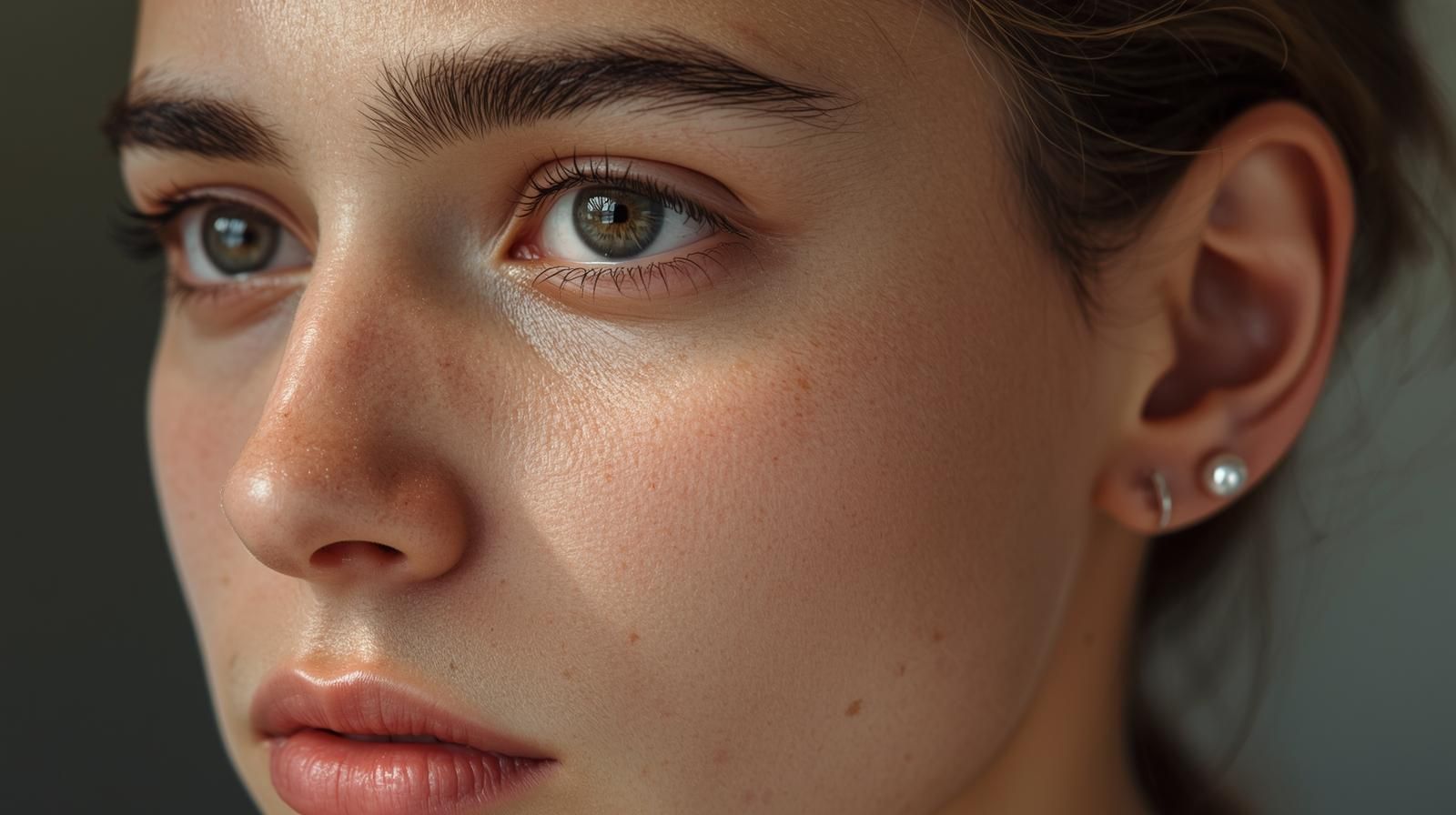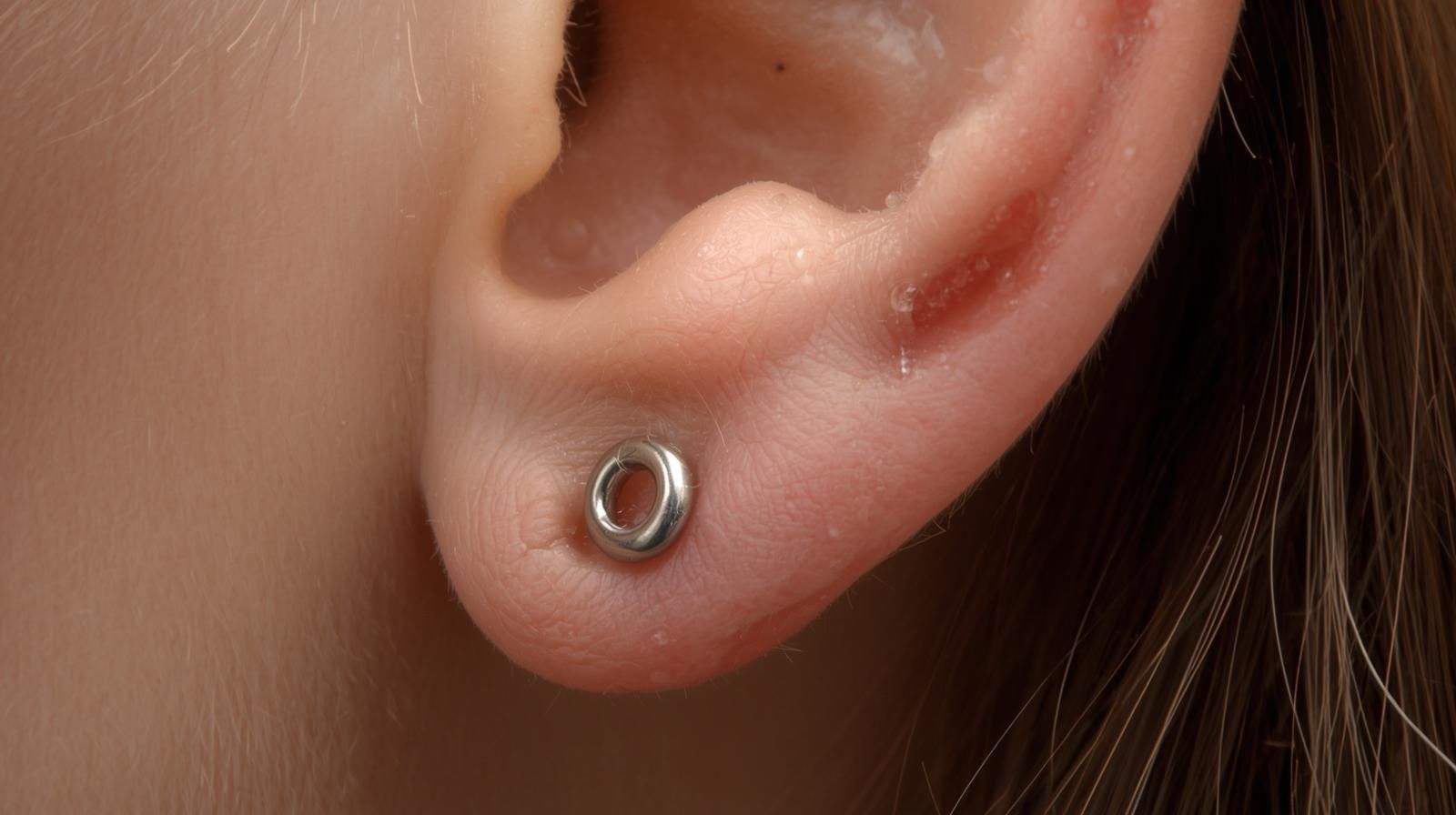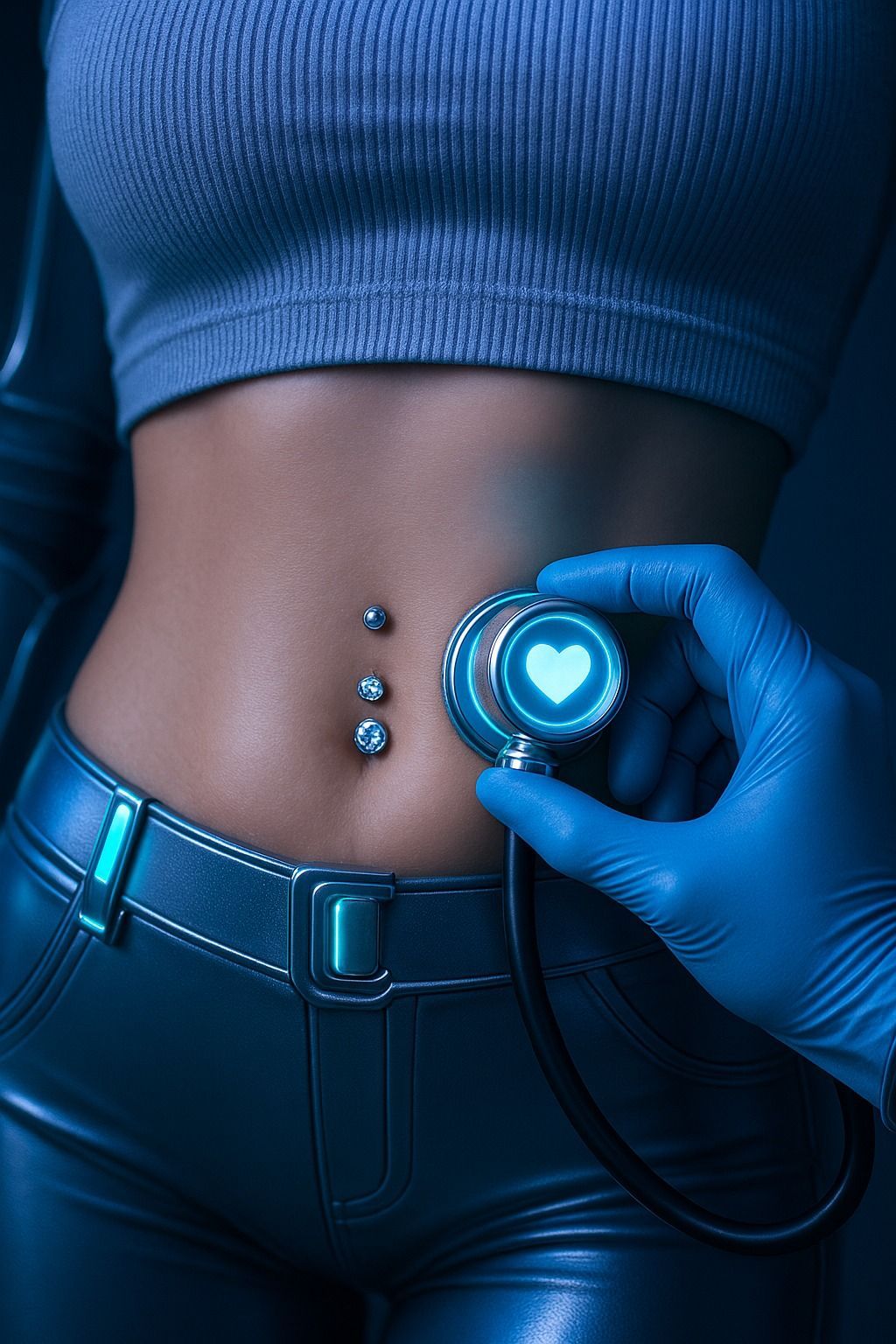Why Did My Piercing Embed? A Comprehensive Guide
1. Introduction
At Impulse BioWorks, we understand that the journey of body modification is not just a fashion statement but a deeply personal expression of identity and artistry. It is a journey that demands a seamless blend of artistic vision and scientific precision. Our studio, nestled in the vibrant and historic heart of Dublin's Temple Bar, is dedicated to delivering not just body modifications but unforgettable experiences founded on trust, innovation, and exceptional care. However, even with the utmost precision and care, complications such as piercing embedding can occur. This guide aims to explore why piercings sometimes embed, how to prevent this from happening, and what actions you can take if it does.
2. Understanding Piercing Embedding
Piercing embedding is a condition where jewellery becomes engulfed by the skin, often causing discomfort, swelling, and sometimes leading to infection. It transforms what should be an empowering journey of self-expression into an uncomfortable ordeal. Understanding the causes and preventive measures can significantly reduce the risk of embedding, ensuring that your piercing experience remains a positive one. Imagine embedding as a ship slowly sinking into the sea, where the skin, like the relentless waves, gradually engulfs the jewellery, causing distress and necessitating immediate attention.
3. Common Causes of Piercing Embedding
3.1 Improper Jewellery Size
One of the primary culprits behind embedding is the use of improperly sized jewellery. At Impulse BioWorks, we stress the importance of fitting jewellery that accommodates both aesthetics and the body's natural response post-piercing. Consider the jewellery as the foundation of a building; if it's not appropriately sized, the entire structure (or in this case, the piercing) becomes unstable.
- Too Short: When the post or barbell is too short, it leaves no room for natural swelling, causing the skin to envelop the jewellery. For instance, a client at our studio once chose a snug-fitting stud, which initially appeared to sit perfectly. However, as the post-piercing swelling set in, the skin began to engulf the jewellery, necessitating a timely intervention to replace it with a longer post.
- Too Thin: Delicate jewellery may shift or be overtaken by swollen tissue, leading to embedding. A case in point involved a thin, elegant nose ring that initially accentuated the client's features but soon became embedded due to insufficient diameter, thus requiring a thicker alternative to prevent the skin from closing over it.
3.2 Swelling
Swelling is a natural response after getting a piercing. However, if not accounted for, it can lead to embedding. Much like how a flood can overwhelm an insufficiently built dam, swelling can overtake improperly sized jewellery.
- Normal Post-Piercing Inflammation: This can push the skin over the jewellery, particularly if the jewellery is too tight. For instance, a client with a new cartilage piercing experienced significant swelling that pushed the skin over the jewellery. By switching to a longer barbell, we were able to accommodate the swelling and alleviate the embedding issue.
3.3 Poor Placement
The precision of placement is crucial in preventing embedding. Jewellery placed too deep or at incorrect angles can significantly increase the risk. It's akin to laying the foundation of a house on unstable ground; poor placement can lead to structural failures.
- Deep or Incorrect Angle: When jewellery is seated improperly, it tends to be pulled into the tissue, especially in soft or flexible areas. We once treated a client whose navel piercing was placed at an angle that caused the jewellery to migrate inward, necessitating a repositioning to prevent further embedding.
3.4 Inappropriate Jewellery Style
Certain styles of jewellery are more prone to embedding, particularly in high-pressure areas. Imagine wearing shoes that aren't suited for hiking; the wrong style can lead to discomfort and injury.
- Improper Backing: Studs lacking proper backing or flat discs like labret studs can easily be drawn into the skin. For example, a client with a tragus piercing opted for a flat-backed stud for its sleek appearance. However, the lack of a secure backing allowed the skin to envelop the jewellery, leading to embedding that required professional adjustment.
3.5 Infection or Trauma
Infections and trauma are critical factors that can exacerbate embedding. Consider the jewellery as a fortress under siege; infection and trauma are the battering rams that weaken its defences.
- Infection: Leads to excessive swelling and pus, which can push jewellery inward. A client experienced a sudden infection in their helix piercing, resulting in rapid swelling that caused the jewellery to embed. Antibiotics and a professional jewellery change were necessary to resolve the issue.
- Trauma: Bumps, snags, or sleeping on fresh piercings can force jewellery under the skin. A client who frequently snagged their new earlobe piercing on clothing found that the repeated trauma caused the jewellery to embed, prompting a switch to a more suitable style less prone to catching.
3.6 Body Reactions
Individual body responses can also play a significant role, akin to how different plants thrive or wither in the same garden environment based on their unique characteristics.
- Tight or Elastic Skin: Some individuals have skin that closes quickly around jewellery if not properly cared for. A client with particularly elastic skin noticed their lip piercing embedding, highlighting the importance of personalised aftercare strategies to accommodate unique body responses.
4. Preventing Piercing Embedding
Prevention is always better than cure. Here are some strategies to reduce the risk of embedding:
- Use Appropriately Sized Jewellery: A professional piercer should account for swelling and recommend the correct size. This is akin to tailoring a suit; it must fit well to serve its purpose properly.
- Avoid Pressure and Trauma: Refrain from sleeping on new piercings and protect them from bumps. Think of your new piercing as a fragile prototype that requires care and protection during its initial stages.
- Monitor for Swelling: Regularly check for signs of embedding, such as increased pain or swelling. This is similar to monitoring a startup's growth metrics to ensure it's on the right track and to intervene early if issues arise.
- Choose the Right Jewellery Style: Opt for jewellery styles that are less likely to cause embedding. Studs with secure backings or rings that are not too snug can help prevent issues. Imagine this as selecting the right tool for a specific task; the fit and functionality must align with the intended use.
- Educate Yourself on Aftercare Practices: Knowledge is power, and understanding the best practices for aftercare can prevent many complications. Just as continuous professional development can enhance career prospects, continual learning about piercing care can ensure long-term health and satisfaction.
5. Actionable Checklists for Piercing Care
Initial Days After Piercing
- Ensure Jewellery is the Correct Size and Style: This initial step is as crucial as choosing the right business model; it sets the foundation for success.
- Avoid Touching or Rotating the Jewellery Unnecessarily: Just as unnecessary meddling can disrupt a well-functioning team, excessive handling can introduce bacteria and disrupt healing.
- Clean with a Saline Solution as Recommended by Your Piercer: Regular cleaning is akin to maintaining a clean work environment, essential for productivity and health.
- Watch for Signs of Swelling or Discomfort: Early detection of issues is key. This is similar to identifying market trends early to capitalise on opportunities or mitigate risks.
Long-term Piercing Care
- Regularly Inspect the Piercing Site for Signs of Infection or Embedding: Think of this as conducting regular financial audits to ensure everything is in order.
- Avoid Changing Jewellery Until the Piercing is Fully Healed: Premature changes can be likened to launching a product before it's ready; it often leads to complications.
- Consult a Professional if You Notice Unusual Symptoms: Seeking expert advice is akin to consulting an advisor for strategic decisions, crucial for navigating complex situations.
- Adopt a Consistent Aftercare Routine: Consistency is vital, much like maintaining a robust corporate strategy that aligns with long-term goals. Regular cleaning, monitoring, and adherence to professional advice will contribute to a successful healing process.
6. FAQ Section
Q1: How soon after a piercing can embedding occur?
Embedding can occur shortly after the piercing if the jewellery is incorrectly sized or the piercing is poorly placed. It's similar to how a project can go off-track early on if foundational decisions are flawed. Usually, within the first few weeks, signs of embedding appear due to the initial swelling phase.
Q2: What should I do if I notice my piercing is embedding?
Seek professional assistance immediately. Do not attempt to remove the jewellery yourself as this can lead to further trauma or infection. This is akin to calling in a specialist to troubleshoot a major technical issue rather than trying to fix it yourself and risking further complications. Quick intervention can prevent more severe outcomes, such as infections or scarring.
Q3: Can all types of piercings embed?
While any piercing can potentially embed, those in areas with soft tissue, like lip or navel piercings, are more susceptible. It's much like how certain markets are more volatile and require careful navigation. Understanding the unique risks associated with different piercing locations is crucial in choosing the right jewellery and aftercare routine.
7. Conclusion
Understanding the causes and preventive measures of piercing embedding is crucial for anyone considering a piercing as part of their body modification journey. At Impulse BioWorks, our goal is to ensure that each client experiences the transformative power of body modification in the safest and most satisfying way possible. Think of your piercing journey as a strategic investment; it requires careful planning, expert guidance, and ongoing assessment to ensure success. By embracing knowledge and expert advice, you can navigate the complexities of piercing care with confidence and ease.
8. Call to Action
If you're considering a new piercing or concerned about an existing one, Impulse BioWorks invites you to visit our studio. Our experts are ready to provide you with a professional and personalised experience that prioritises your safety and satisfaction. Book your appointment today and take the first step towards a flawless body modification experience. Just as businesses thrive on customer trust and excellence, so too do we thrive on ensuring your piercing journey is exceptional.









